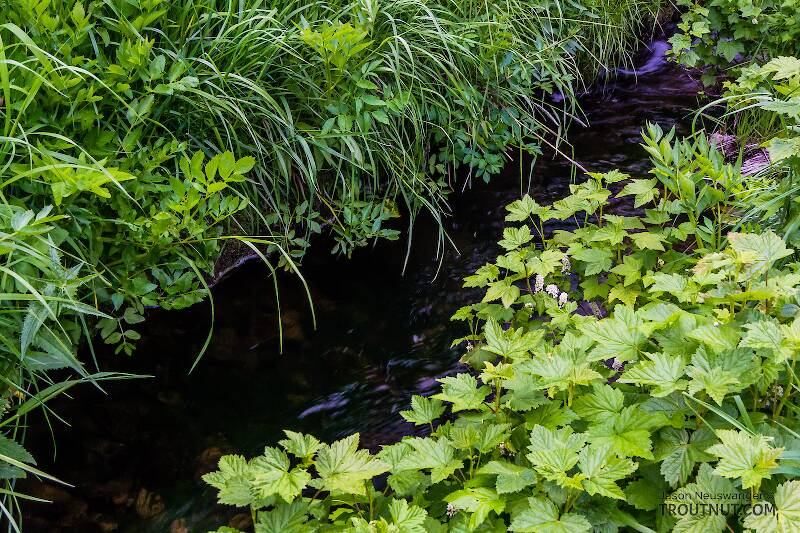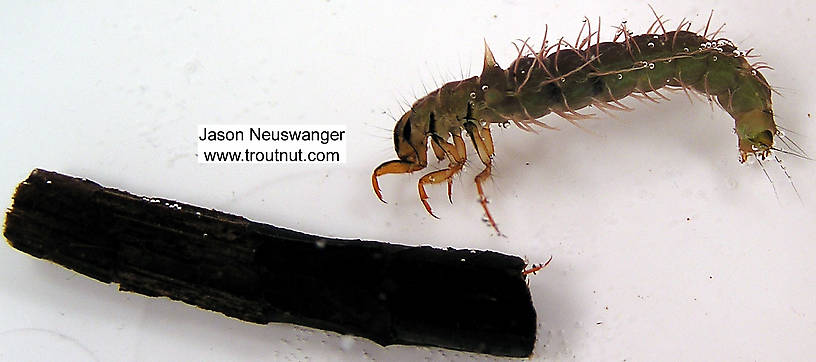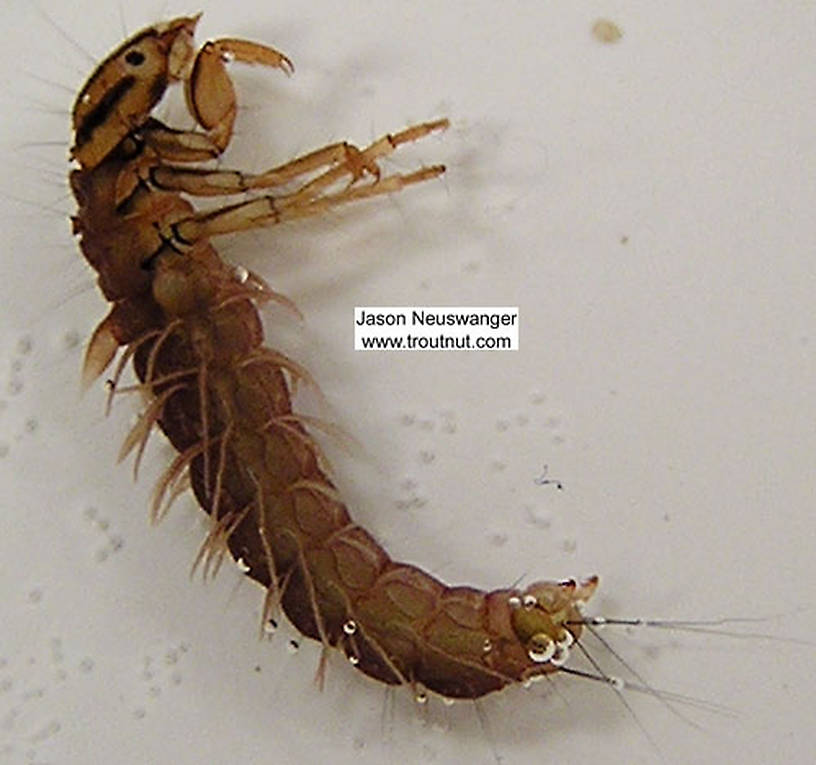
Blue-winged Olives
Baetis
Tiny Baetis mayflies are perhaps the most commonly encountered and imitated by anglers on all American trout streams due to their great abundance, widespread distribution, and trout-friendly emergence habits.


Caddisfly Family Phryganeidae
Where & when
Time of year : Late spring or summer
Preferred waters: Lakes or rivers
In 1159 records from GBIF, adults of this family have mostly been collected during July (30%), June (30%), August (19%), May (8%), and September (7%).
In 607 records from GBIF, this family has been collected at elevations ranging from -30 to 14692 ft, with an average (median) of 774 ft.
Family Range
Hatching behavior
Pupae of this family crawl out on shore to emerge.Egg-Laying behavior
Females lay their eggs on the surface, and they may run across the surface to the bank. This behavior may be found throughout the family but it has earned the common name Travelling Sedges for the stillwater genus Banksiola.Larva & pupa biology
Diet: Smaller aquatic insects; other food when small
Current speed: Still or slow
Shelter type: Leaf or bark
Specimens of the Caddisfly Family Phryganeidae
2 Larvae
1 Video of Phryganeidae Caddisflies:
Caddisfly larvae of this family can easily leave and re-enters their cases. I caught two of them playing musical chairs or something with this one... funny!
Discussions of Phryganeidae
It's far and away the most important large stillwater caddis I've come across because of its hatching behavior. Unlike other large lake dwelling caddis I've observed, they seem to exhibit all three traits that make them valuable to anglers. It's activity is diurnal, they emerge in open water, and they do this synchronized in large numbers over several hours. It gets even better! They don't fly off but scamper across the surface until they reach shore. This trip may cover a distance covered in yards not feet (once watched one go an estimated 50 yds into shore before I lost site, hoping to see a big rise that never happened...
The best fishing is on soft evenings. Use stiff tippets and any number of green bodied deer hair winged dries in the appropriate size. Spot casting to rises or attempts to lead them usually proves futile as the fish are usually covering water pretty fast. What works for me is to cast fan fashion as far as is comfortable, stick the rod under the casting arm and strip back with both hands to avoid pauses in the retrieve while matching the speed of the natural. Hold the line delicately because the takes can be vicious! Experience has shown the fish are more selective to the appropriate motion than differentiation size or even color of pattern. Best are those designed to skate leaving the proper "V" wake and that float well.
For reasons unknown (maybe due to atmospherics messing with a clean emergence?) they will sometimes swim around in a circle whirligig fashion. On evenings when this behavior predominates, the pupa are a more consistent bet throughout the hatch, either swam shallow with a strip retrieve or raised from the bottom using a long tippet. Hard to beat the traditional Carey Special in the appropriate color for this. Unless of course, somebody can come up with a way to make their dry fly swim around in circles.
Start a Discussion of Phryganeidae
References
- LaFontaine, Gary. 1981. Caddisflies. The Lyons Press.
- Swisher, Doug and Carl Richards. 2000. Selective Trout. The Lyons Press.



